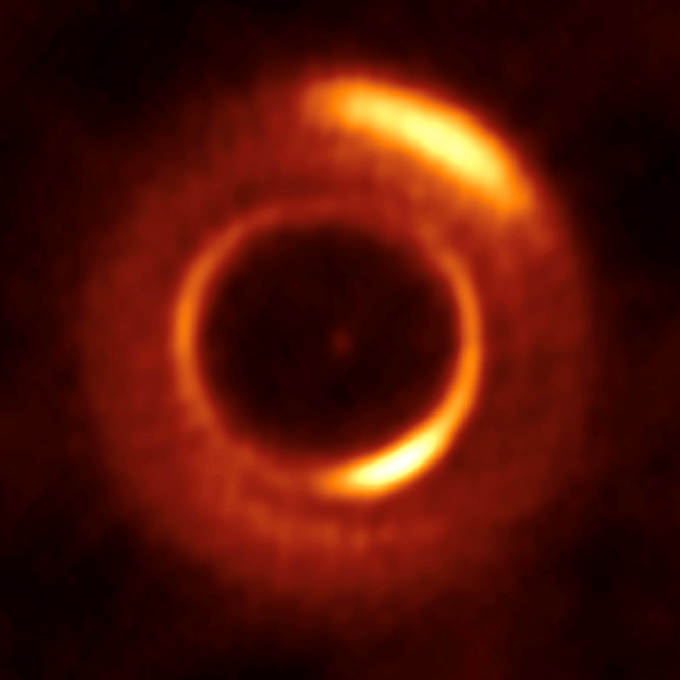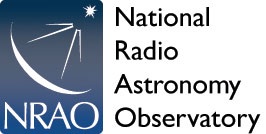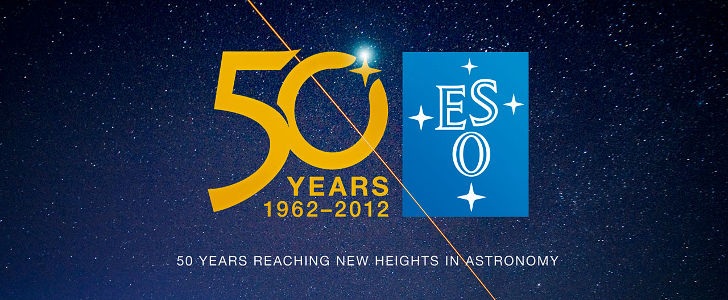
20 June, 2018
Ruobing Dong
Steward Observatory, University of Arizona, USA
Institute of Astronomy and Astrophysics, Academia Sinica, Taiwan
+1 609 423 5625
rbdong@gmail.com
Nicolás Lira
Education and Public Outreach Coordinator
Joint ALMA Observatory, Santiago – Chile
Phone: +56 2 2467 6519
Cell phone: +56 9 9445 7726
nicolas.lira@alma.cl
Masaaki Hiramatsu
Education and Public Outreach Officer, NAOJ Chile
Observatory
, Tokyo – Japan
+81 422 34 3630
hiramatsu.masaaki@nao.ac.jp
Charles E. Blue
Public Information Officer
National Radio Astronomy Observatory Charlottesville, Virginia – USA
Phone: +1 434 296 0314
Cell phone: +1 202 236 6324
cblue@nrao.edu
Richard Hook
Public Information Officer, ESO
Garching bei München, Germany
Phone: +49 89 3200 6655
Cell phone: +49 151 1537 3591
rhook@eso.org

ALMA image of the 0.87 mm continuum emission from the MWC 758 disk. Credit: ALMA (ESO/NAOJ/NRAO)/Dong et al.
Since early 2000, rich structures, including gaps and rings, dust clumps, and spiral arm-like features, have been discovered in a few tens of disks surrounding newborn stars. With the belief that planets are forming inside, astronomers named these disks protoplanetary disks.
The origin of these structures is in hot debate among astronomers. In one scenario, they are thought to be produced by unseen planets forming inside and gravitationally interacting with the host disks, as planets open gaps, shepherd dust clumps, and excite spiral arms.
Alternative ways to produce observed disk structures that do not invoke planets have also been raised. For examples, large central cavities may be the outcome of photoevaporation, as high energy radiations from the central star evaporate the inner disk. Also, under certain conditions shadows in disks may mimic the spiral arms seen in reflected light.
The protoplanetary disk around a young star MWC 758 is located at 500 light years from us. In 2012, a pair of near symmetric giant spiral arms was discovered in reflected light. In dust thermal and molecular gas line emission at millimeter wavelengths, a big inner hole and two major dust clumps have been found, too.
Now with the new ALMA image, the previously known cavity of MWC 758 is shown to be off-centered from the star with its shape well described by an ellipse with one focus on the star. Also, a millimeter dust emission feature corresponds nicely with one of the two spiral arms previously seen in reflected light. Both discoveries are the first among protoplanetary disks.
“MWC 758 is a rare breed!”, says Sheng-Yuan Liu at ASIAA, co-author of this study, “All major types of disk structures have been found in this system. It reveals to us one of the most comprehensive suites of evidence of planet formation in all protoplanetary disks.”
Previously in 2015, Dr. Dong and his collaborators proposed that the two arms in the MWC 758 disk can be explained as driven by a super-Jupiter planet just outside the disk.
“Our new ALMA observations lend crucial support to planet-based origins for all the structures.”, says Dr. Takayuki Muto at Kogakuin University, Japan, co-author of this research, “For example, it’s exciting to see ellipses with one focus on the star. That’s Kepler’s first law! It’s pointing to a dynamical origin, possibly interacting with planets.”
The off-centered cavity strongly, on the other hand, disfavors alternative explanations such as photoevaporation, which does not have an azimuthal dependence.

Various disk structures are marked. The green dotted contours mark the boundaries of the disk; the small circle at the center roughly marks the location of the star; the two green solid contours represent the extent of the two bright clumps; the solid, dotted and dashed white arcs trace out the inner, middle, and outer rings, respectively; and the arrow points out the spiral arm. The resolution (beam size, ~6.5 AU) of the image is labeled at the lower left corner. Credit: ALMA (ESO/NAOJ/NRAO)/Dong et al.
The fact that the south spiral branch is present in the millimeter emission tracing the dust rules that it’s a density arm. Other scenarios, such as shadows, which view the spiral arms as surface features, are not expected to reproduce the observations. The ultra-high resolution achieved in the new ALMA dataset also enables the detection of a slight offset between the arm locations in reflected light and in dust emission, which is consistent with models of planet-induced density wave.
“These fantastic new details are only made possible thanks to the amazing angular resolution delivered by ALMA”, says co-author Eiji Akiyama at Hokkaido University, Japan, “We took full advantage of ALMA’s long baseline capabilities, and now the MWC 758 disk joins the elite club of ultra-high-resolution ALMA disks alongside only a handful of others.”
Additional information
This research was presented in a paper “The Eccentric Cavity, Triple Rings, Two-Armed Spirals, and Double Clumps of the MWC 758 Disk” by Dong et al. to appear in The Astrophysical Journal.
The team is composed of Ruobing Dong (U. of Arizona, USA; ASIAA, Taiwan), Sheng-yuan Liu (ASIAA, Taiwan), Josh Eisner (University of Arizona, USA), Sean Andrews (Harvard-Smithsonian Center for Astrophysics, USA), Jeffrey Fung (UC Berkeley, USA), Zhaohuan Zhu (UNLV, USA) Eugene Chiang (UC Berkeley, USA), Jun Hashimoto (Astrobiology Center, NINS, Japan), Hauyu Baobab Liu (European Southern Observatory, Germany), Simon Casassus (University of Chile, Chile), Thomas Esposito (UC Berkeley, USA), Yasuhiro Hasegawa (JPL/Caltech, USA), Takayuki Muto (Kogakuin University, Japan), Yaroslav Pavlyuchenkov (Russian Academy of Sciences, Russia), David Wilner (Harvard-Smithsonian Center for Astrophysics, USA), Eiji Akiyama (Hokkaido University, Japan), Motohide Tamura (The University of Tokyo; Astrobiology Center, NINS, Japan), and John Wisniewski (U. of Oklahoma, USA).
See the full article here .

five-ways-keep-your-child-safe-school-shootings
Please help promote STEM in your local schools.
![]()
The Atacama Large Millimeter/submillimeter Array (ALMA), an international astronomy facility, is a partnership of Europe, North America and East Asia in cooperation with the Republic of Chile. ALMA is funded in Europe by the European Organization for Astronomical Research in the Southern Hemisphere (ESO), in North America by the U.S. National Science Foundation (NSF) in cooperation with the National Research Council of Canada (NRC) and the National Science Council of Taiwan (NSC) and in East Asia by the National Institutes of Natural Sciences (NINS) of Japan in cooperation with the Academia Sinica (AS) in Taiwan.
ALMA construction and operations are led on behalf of Europe by ESO, on behalf of North America by the National Radio Astronomy Observatory (NRAO), which is managed by Associated Universities, Inc. (AUI) and on behalf of East Asia by the National Astronomical Observatory of Japan (NAOJ). The Joint ALMA Observatory (JAO) provides the unified leadership and management of the construction, commissioning and operation of ALMA.


